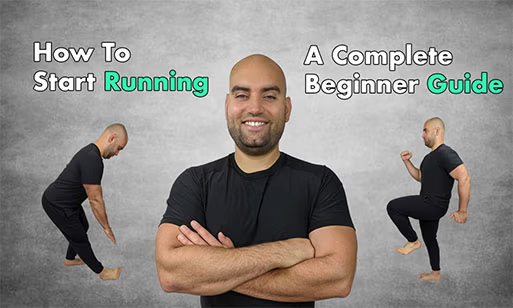Running is one of those things that’s both easy and hard at the same time. The barrier to entry is very low. Simply throw on some shoes, go outside, and run to your heart’s satisfaction. Most of us know how to start running, right? I’d go as far as saying it’s one of the most natural things we do as human beings, albeit we do a lot less of it these days. However, starting to run and consistently running as a regular exercise are two different stories.
So why even run in the first place? Running benefits include improving cardiovascular health, maintaining a healthy weight, improving mood and sleep, getting conditioned for a sport/activity, and building stronger bones/muscles. Additionally, it’s the easiest way to exercise in what appears to be one of the most severely locked down regions in the world: Ontario, Canada. This is why I’m seeing more people than ever run outside.
As a physiotherapist, it’s definitely my job to make sure people can optimize their performance and prevent injuries. Running for beginners is no different. So I’ve created a complete and easy-to-follow guide on how to start running. Although it’s aimed at beginners, anyone can use this guide. I even go as far as discussing running technique and performance optimization. So let’s break this down from: 1) beginning to think about running, to 2) the end of a nice long run.
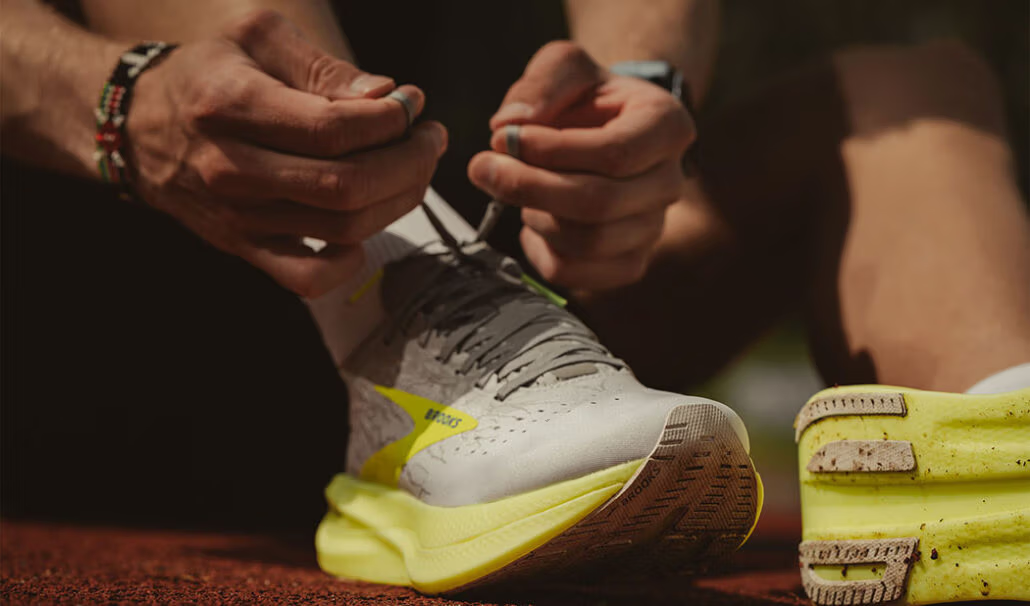
CHOOSING THE RIGHT RUNNING GEAR
Running Shoes:
Running shoes come in so many varieties now. This can be daunting if it’s your first time shopping for a pair. I recommend shoes labelled as “runners” for a few reasons. First, they offer better sole support. Because their soles are thicker, running on harder surfaces won’t put as much pressure into your feet and ankles. Find pairs that are covered in breathable material to help offset the heat and moisture in your feet. Yes, your feet will heat up.
The fit should be snug but comfortable. A simple test is to see if you can wiggle your toes around. If you can, that’s a pass. On the flip side, your shoe shouldn’t slide off your heel while running. To help avoid these issues, you can always visit a professional running store that can perform foot assessments. They’ll measure your feet, watch you run on a treadmill, and determine the right shoe for your running technique and needs. Although this can cost you a bit more, it’s definitely worth it.
Finding the right shoes will also help prevent foot problems like plantar fasciitis from occurring.
Running Wear:
Regarding what to wear, simplicity is key. Water-wicking material is what I recommend. These materials prevent your clothes from getting soaked by the inevitable sweat you’ll be experiencing. Try using lighter materials. If you need to have your phone on you, just make sure you have pockets with zippers on them. You can also order running belts designed to hold things like phones, ID cards, and keys around your waist.
Plan ahead based on the weather. When it’s warmer outside, having lighter clothing and perhaps a hat with sunglasses can help. If it’s colder and/or windy outside, having windbreakers is your better option. These materials help prevent wind from blowing through your clothing, hence keeping you warmer. If you listen to music while running, try getting wireless earphones. Wires can be a nuisance when your arms are swinging back and forth.
Keep in mind that music will dampen your attention to the noise outside. And let’s say you decide to run on sidewalks and crosswalks. Being able to hear the outside world can help in dangerous scenarios involving vehicles.

A QUICK LOOK AT WHAT AND WHEN YOU SHOULD EAT
Food:
What to eat before your run is pretty important. You don’t want anything heavy in your stomach within an hour of it. Keep it light by having a simple carb like a banana or apple. This is because the body will digest it pretty quickly. Quick digestion means quick access to that energy while running. Since they’re fruits, you’re also benefiting from the vitamins, minerals, and fiber too! A great resource on all things nutrition for activity is Dr. Rhonda Patrick, a world-renowned researcher in the field. She’ll equip you with the science behind the foods you need to consider when exercising.
You may also decide to run first thing in the morning without eating anything, and that’s fine. Make sure you don’t have any pre-existing blood pressure issues. Be very self-aware of any dizzy spells or light-headedness, and stop the run immediately if you experience any of these. Running while fasting means that your body will rely more on your fat stores for energy. This is why it’s an attractive option for those looking to use it as a way to lose weight.
Hydration:
Regardless of what you decide to eat, make sure you’re hydrated. The last thing you want is a crippling cramp half-way through your run making it impossible to move. Hydration is increasingly important on hotter days when water loss via sweat is ramped up. A 250mL glass of water 15 minutes prior to the run should suffice.
Want to carry a water bottle or attach one to your side? That’s even better in my opinion. A running for beginners guide like this one should always err on the side of caution. Understanding your body while exercising is one of the running benefits I’d like to highlight here. Once you’re experienced, you’ll know how much to drink pre-run and post-run. In the meantime, having the water with you during a run is a great way to make sure dehydration never happens.
Recovery:
After the run, your body is spent. This presents the best opportunity to nourish yourself with foods that promote muscle and tendon recovery. Aim for a decent balance of proteins, fats, and carbohydrates within an hour after your run.
My favourite post-run meal is a shake I never get sick of. It’s a blend containing 40 grams of whey isolate protein (from a protein powder), a banana, a tablespoon of almond butter, ½ cup of frozen mixed berries, and some water. If I’m feeling super healthy, I’ll add a handful of spinach in there as my leafy green for the day.
Don’t overcomplicate this step. If you cover the 3 macromolecules of clean proteins, fats, and carbs, then you’re good. For more details on post-workout nutrition, Precision Nutrition is a great resource. They’re a leader for all things nutrition in North America plus they offer courses and certifications on the subject.
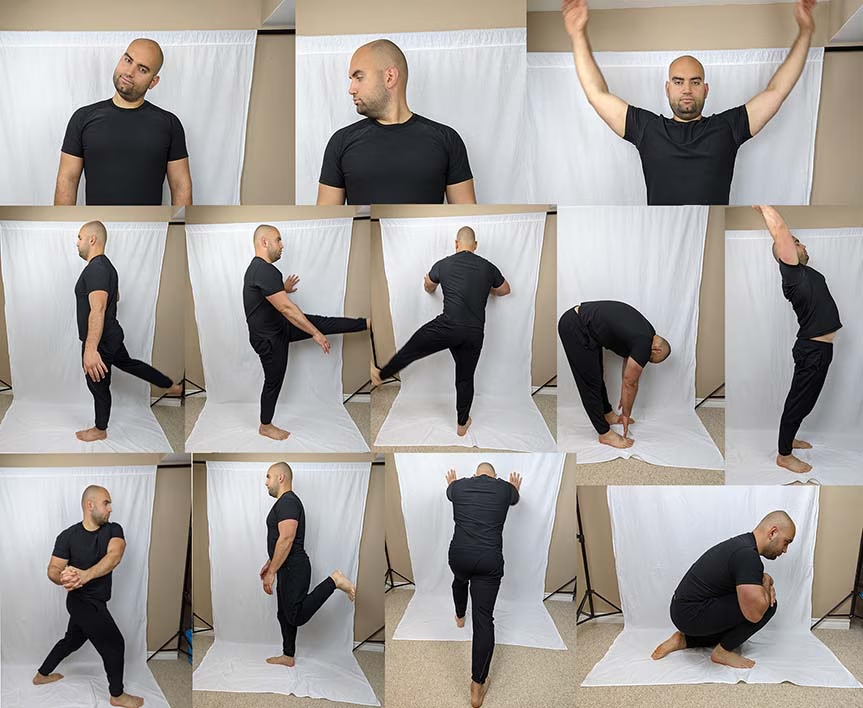
EXERCISES DESIGNED TO IMPROVE RUNNING
Warm-up/Stretching:
Warming up before a run is crucial. As we’ll discuss in a bit, running is a whole-body exercise. Everything from your shoulders and spine down to your toes are being used. I recommend a dynamic stretching routine that will hit every important part of the body. These stretches are different from your traditional stretches in that you’re moving while doing them, hence the name “dynamic”.
The perfect dynamic stretches to do include:
- Neck: Rotations, side bends, & full head nods.
- Arms: Inward circles, outward circles, up/down swings, & side-to-side swings.
- Spine: Forward/backward bends, rotations, & side-bends.
- Hips: Forward-back swings, & side-to-side swings.
- Knees: Alternating butt-kicks, & alternating high knees.
- Ankles: Oscillating calf stretches (while standing and while kneeling), & mini-hops.
The whole process should take no more than 5 minutes. It’ll prepare you to a) run more effectively and efficiently, and b) significantly decrease your chances of injury.
At this point, you’re probably thinking that there’s a lot of stuff to consider on how to start running, and you’re certainly not wrong. Listen, running is a pretty straight forward exercise. However, what we’re trying to do is make you efficient, avoid injury, and turn this into a long-lasting activity for you.
Strengthening/Stabilization:
Activation
Now we need to address how to train outside of running, to get better at running. This involves addressing both the strength and stability at your hips and ankles. Exercises like clamshells, glute bridges, knee raises, and calf raises are a great place to start. Although these won’t get you much stronger, they “activate” running muscles so to speak.
Activation is a fancy way of saying that your body will recruit these muscles when running which is important. We have many muscles that should be used while running. Sometimes, some muscles that don’t get attention during training turn off and fail to contribute to your run. This can lead to overuse of other muscles, and decreased running efficiency. Activation exercises like the ones above are a solution to this.
Complex Movements
The next step is adding complex movements. My favourite 3 are 1) squats, 2) stiff-leg deadlifts, and 3) lunges. These exercises are a bit more challenging, making them great for building strength in the lower extremities. They also have good carry-over effects in improving your run. It may not look like it, but these movements replicate the running motion to some degree. This is especially true for the lunge which is an over-extended, deep step forward when you look closely.
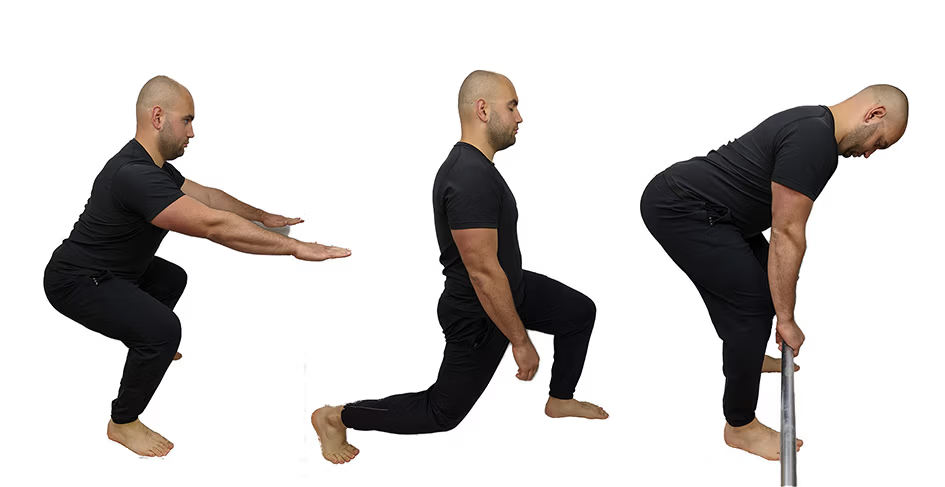
Stabilization
Lastly, you want to build your stability and coordination. Running is an activity that requires you to be a) on one foot most of the time, and b) off both feet some of the time. You’re never on both feet when running. Building single-leg stability is crucial in supporting this. Exercises like single-leg balancing are a great place to start. Once you get comfortable, you can do modified versions of the single-leg deadlift and single-leg squats. This will help build both strength and stability at the same time.
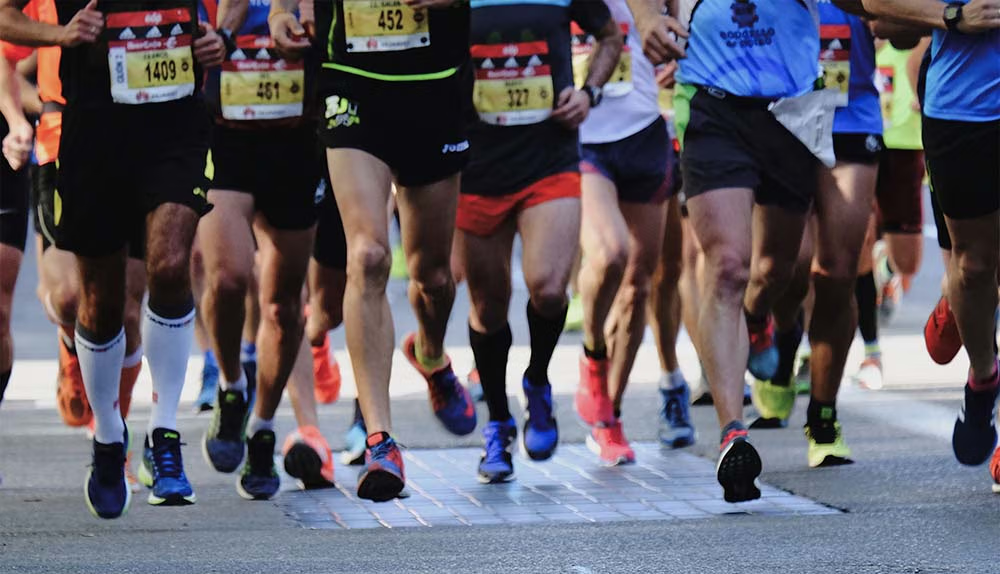
PLANNING & MEASURING YOUR BEST RUNNING ROUTE & PACE
Types of Running Surfaces:
Everyone differs in their preference of location. While some enjoy running in the city, others prefer trekking through trails. Some prefer running on a treadmill or a track if it means getting the job done. What’s important to note is that different running surfaces provide unique challenges to the body.
Take sidewalks for example. Concrete is tough on your joints because there’s no give to it. Whatever force you throw at it (i.e. your foot striking the concrete floor) comes back to you almost fully. Compare that to grass or rubberized tracks that do the opposite, making them better at accepting the forces you throw at them. The running benefits of these types of tracks put your joints at better ease.
Sidewalks are also slanted. If you’ve ever looked closely at them, they tilt towards the main road to facilitate water drainage into the sewage system. This has some problematic implications, especially on your feet and your ankles. Depending on the side of the road you’re running on, you’ll be shifting your body weight asymmetrically. One foot will be more curved while the other will be flatter. Of course, to offset this you can run on the other side of the road half the time.
My advice? Begin your running journey on a rubberized track or treadmill. Why?
First, you can control the environment. If you’re running on a treadmill or a track, you’re within the same vicinity at all times. You don’t have to worry about traffic lights, interruptions, or surprises really. You can choose a comfortable pace and stick with it. Plus, if you need to stop for any reason, you’ll be close to your vehicle (assuming you drove to the track). This beats stopping half-way through a hike or a run through the city and having to walk back.
Second, the track is consistent. There’s no issues of weird slants or uneven surfaces. This reduces the risk of unexpected injuries, making it a great place to start. Treadmills are typically good, but there is a small learning curve when getting used to running on its moving belt. Regardless, the consistency offered is great for beginners learning how to start running.
Third, these tracks are easier on your joints as we’ve previously mentioned. The last thing you want is soreness that prevents you from running again. Choosing softer tracks can significantly lessen the likelihood of this happening. I don’t suggest grass early on because it can be unpredictable. It’s hard to judge the surface which can run the risk of tripping.
Distance and Pace:
As eager as you may be to run long distances right away, hear me out. You want longevity right? Running is easy to start but hard to sustain as a long-lasting activity. Your distance and pace should grow the more accustomed you get to running. But in order to do that, you should start small. My recommendations include:
Setting a small distance. I suggest 1 kilometer to get started. This will get you into the rhythm without tapping out to exhaustion. With this strategy, you can focus on solidifying your running technique as this tends to deteriorate more when you’re tired. Getting used to poor running form can make it harder to unlearn later on. Now’s your chance to correct things while you’re taking it easy.
Setting a slow pace. Start slow and gradually increase your pace to figure out what your body can handle. A simple test is to see how fast you can run while still being able to talk. If you can’t talk, you might be going a bit too fast. If you can sing or whistle, you might be going too slow. Find that healthy balance so you can sustain a decent pace without getting super tired.
Measuring your pace. In order to improve your pace, you’ll need to measure it. One of the easiest ways to do so is by timing it. Use a path with a known distance and time yourself each run. The goal is simple. You want to decrease the time it takes to finish the path. You may not shave time off the run every time, but at least you’ll have a benchmark to aim for.
Running in intervals. You can use intervals to ease your way into running. Alternating between running for a minute, then power-walking for a minute is one way to do it. Choose intervals that help you achieve a manageable running intensity. The goal is to eventually stop using intervals once you’re able to run the entire path.
Conversely, intervals can also be a way to increase running intensity. You can select intervals that alternate between 50-60% of your max speed and 80-90% of it. This can be a clever way to challenge both your slow-twitch and fast-twitch muscles, as well as different metabolic systems. The benefits of running like this are more for the experienced runners and athletes. It’s something worth mentioning for you to try once you get more comfortable running.

FIXING YOUR RUNNING TECHNIQUE
Yes, running technique makes a huge difference. I say this because it’s probably the most neglected aspect of running that we’ve discussed so far. We just jump right into it without considering form or technique. As I discuss running form, it might seem overwhelming but it’s really not. Let’s break down 3 important things to consider when running for beginners:
Interconnectedness of the Body:
Our arms and legs are connected to each other through a tissue network called “myo-fascia”. For every arm swing, there’s an opposite leg swing that has to happen when we run or walk. Try paying attention to this next time you walk or run. This interconnectedness should make one thing pretty clear. That if we have any restriction in our arms, it can affect the movement in our legs and vice versa. Conversely, having arms that move well will help drive your legs to move better. I encourage you to think of running as a whole-body exercise.
Running Posture:
There are a few things to keep in mind when fixing your running posture. You’ll want to use an upright posture with your chest up and your head looking straight ahead. Keep your shoulders relaxed and prevent them from hiking. Prevent your elbows from getting super bent and tight. Instead, have your arms relatively loose and swinging in an alternating pattern with your legs.
You’ll find that it gets harder to maintain a decent posture towards the end of the run when exhaustion sets in. Do your best and fight the urge to hunch over when you’re tired. First, it simply doesn’t help. Better posture allows you to move and breathe better. Second, your efficiency decreases when you lose your posture. Why allow yourself to slow down if you can prevent it?
Foot Strike:
Foot strike is the moment your leading leg hits the floor. There are 3 potential spots on your foot that can make contact with the floor first:
- The Hindfoot
Depending on the type of run you plan on, there’s an optimal foot strike strategy for it. For longer distances, people naturally default to using their hind-foot, also known as a heel strike. Although it’s common, I wouldn’t rely on this too much just because it reduces how much you use your hips.
- The Forefoot
Then we have the forefoot which is basically when you run on your toes. This is very helpful when running at higher speeds and shorter distances. However, most of us plan to run for at least 20 minutes a time and this strategy isn’t sustainable. It puts an increased demand on your calves if used too long. However, it’s perfect for accelerating (increasing your speed over time).
- The Midfoot
Lastly, there’s the mid-foot strike. Think of this one as landing pretty close to a flat foot. In my opinion, having something between a mid-foot strike and a heel strike is the optimal running for beginners strategy. This is not to say there’s a perfect way to run because there isn’t. We can say that running at the extremes (too much toe-strike or heel-strike) can be inefficient and put undue stress on your feet.

MAKE SURE YOU’RE BREATHING CORRECTLY
Why Breathing is Important
Our oxygen demands increase substantially when we run. Muscles are being used more heavily and require oxygen as energy to keep us going. It’s easier to feel out of breath when we run. Because of this, our first inclination is to “breathe more”. But doing so can be a bit tricky because of a problem known as hyperventilation. This is an issue when you breathe at an abnormally higher rate. The thought process is that the faster you breathe the more oxygen we can consume, but it’s actually the opposite. Let’s discuss why that’s the case below.
Why Breathing Correctly is Important
This may bring you back to elementary school biology, but bear with me. We all know that we breathe in or inhale oxygen, and breathe out or exhale carbon dioxide. However, our body also uses these air molecules as signals. In fact, carbon dioxide is a stronger driving force of breathing from a biochemistry perspective.
The problem with hyperventilation is that we blow away a bit too much of the carbon dioxide we keep in our lungs. Because of this, the blood vessels that supply important organs like our brains tighten up. Constricted blood vessels reduce blood flow to the brain, which decreases how much oxygen the brain can get. This can cause symptoms like light-headedness and dizziness which puts you at risk of fainting and falling. Let’s not fall into this trap.
How to Correct Your Breathing
Thankfully we can avoid these issues by tweaking a few things. Breathing is both a muscular and mechanical thing that can be trained to improve. The three breathing muscles include our abdomen, our diaphragms, and the muscles in between our ribs called intercostal muscles. They all work to fill our lungs with air.
Running demands these guys to pump more air into our lungs. To do this effectively, we need to time our breathing with our steps. A great place to start is by breathing in for a period of 2-3 steps, and breathing out for a period of 3-4 steps while running. Notice that we’re spending a bit more time exhaling. That’s typically the pattern we want to see. Creating a pace for your breathing will get you to use the breathing muscles way more effectively.
In terms of where to breathe from, that’s up to your preference. Although strategies like “in through your nose, and out through your mouth” are encouraged, they’re often unrealistic. Noses can sometimes be plugged or restricted, making this a daunting task. Instead, find a comfortable path. You can breathe exclusively through your nose or your mouth if you prefer. On a side note, breathing in through your nose will help warm the air that reaches your lungs. This is helpful on those chillier days.
In another way, one of the benefits of running is that it forces you to breathe more! Think about the last time you actually took a deep breath in and out. Can’t remember, right? Running is a great way to get your lungs expanding and clearing all the gunk out. Breathing is also great for your mental health in many ways.
EXTRA THINGS TO CONSIDER:
Sleep
Sleep is one of the most underrated components of human health. When discussing how to start running, it would be a crime not to include sleep as an essential component. This is because a lot of your body’s repair relies on getting a full night’s sleep. Since running can be a taxing activity on the body, getting this repair is crucial. So always aim to get some good sleep!
Stress
Another one of the amazing benefits of running is the reduction of stress. We all get stressed to some degree. It’s actually part of being human. What makes us stronger is how we respond to and grow from it. However, we can sometimes bear an abnormal amount of it. To respond to this, one may need external factors like running as a tool to diminish excess stress. To put it bluntly, it’s hard to stress after a nice long run. You’re breathing harder, physically drained, and have feel-good chemicals called endorphins flowing through your body.
HOW TO START RUNNING – THE SUMMARY:
Give yourself a pat on the back. You’ve committed to a fantastic activity that will have life-changing benefits. The above is an exhaustive guide on how to start running. I created it with the goal of covering everything I wish I knew when starting my own running journey. As a beginner, you will face many challenges and obstacles. Just know that there’s a huge community of runners out there to support you including myself.
For more information, you can:
Email us at: [email protected]
Text us at: 647-407-9265
Otherwise, thanks for committing your valuable time to reading this!
Boss Physio, out.

